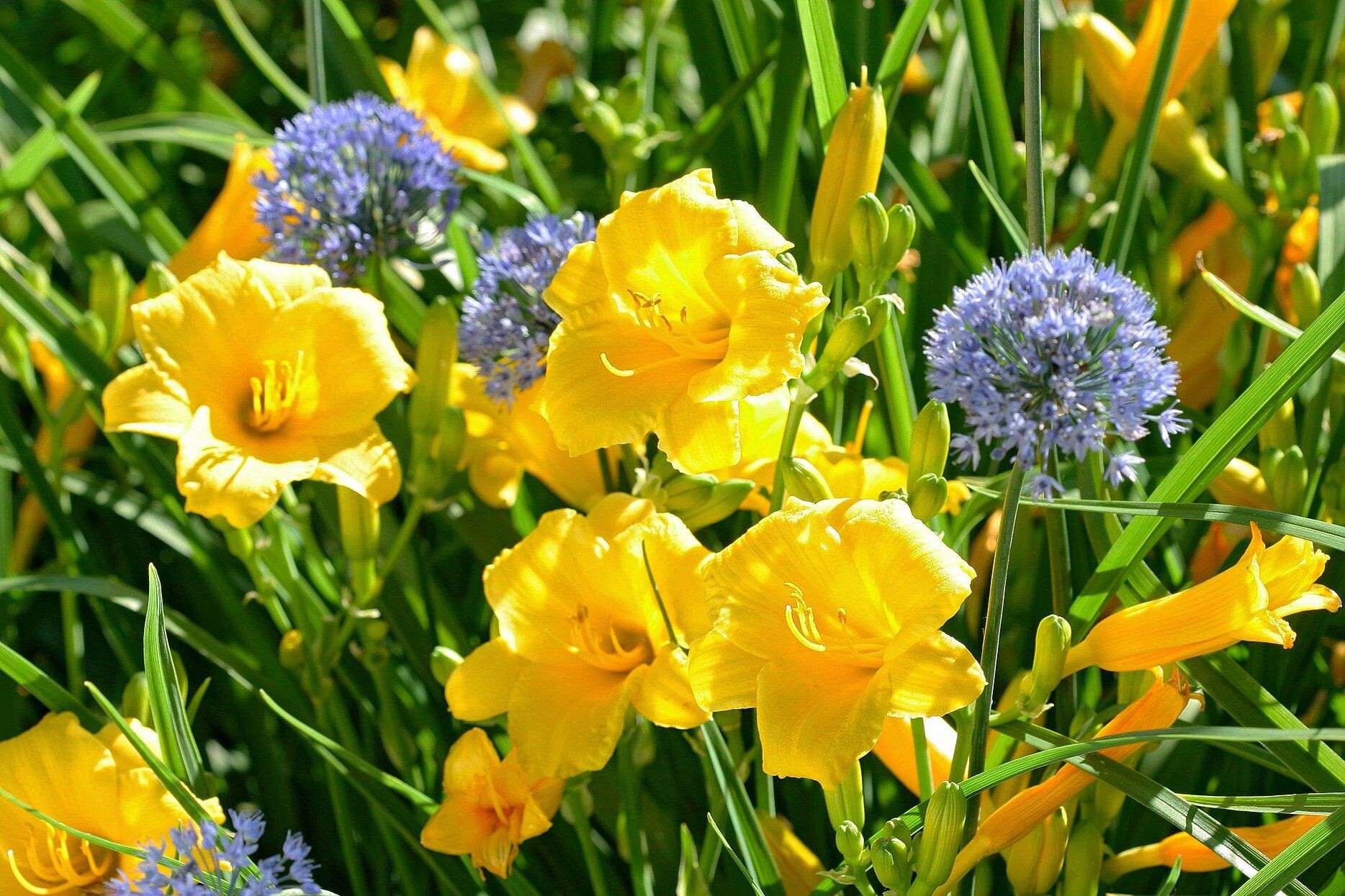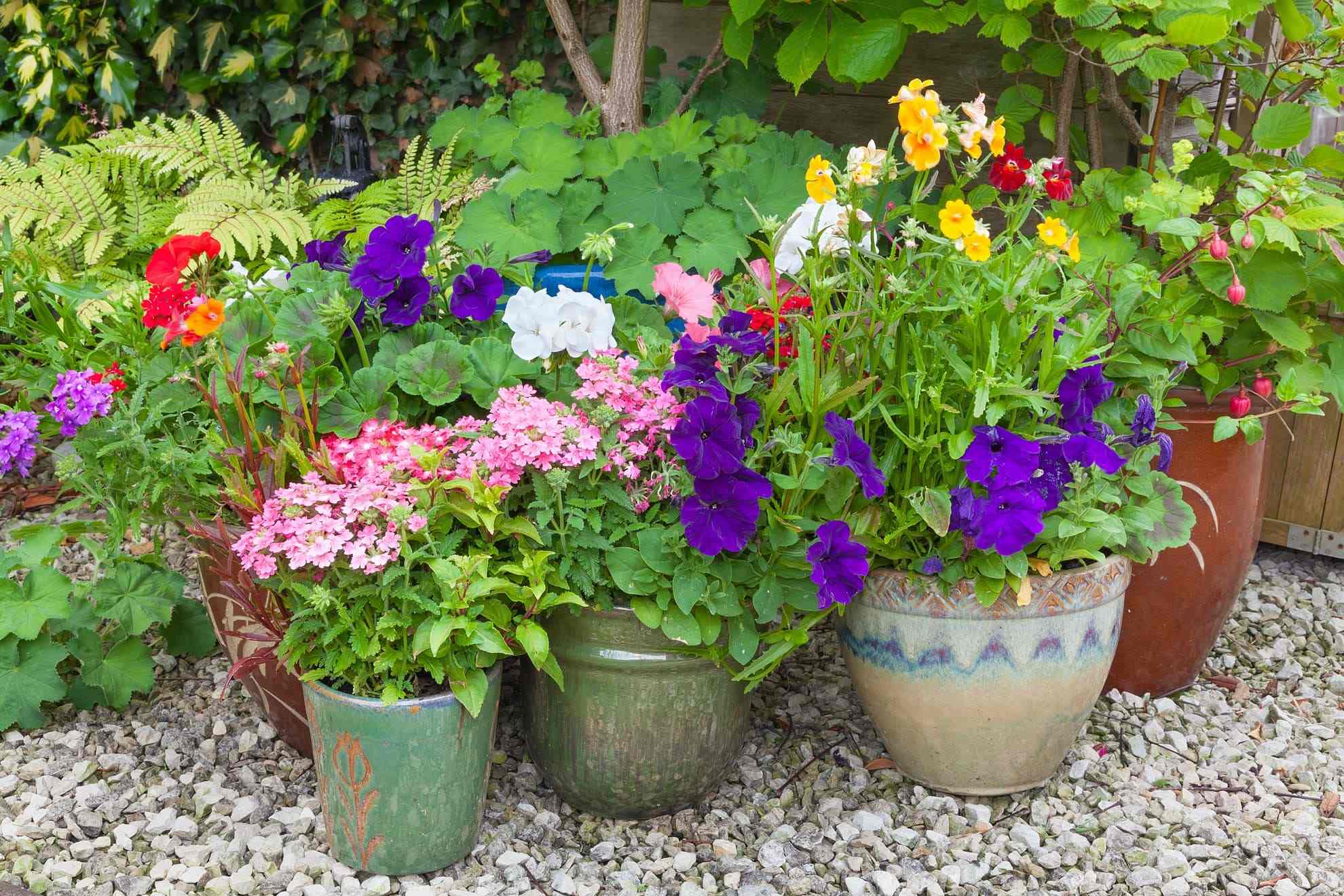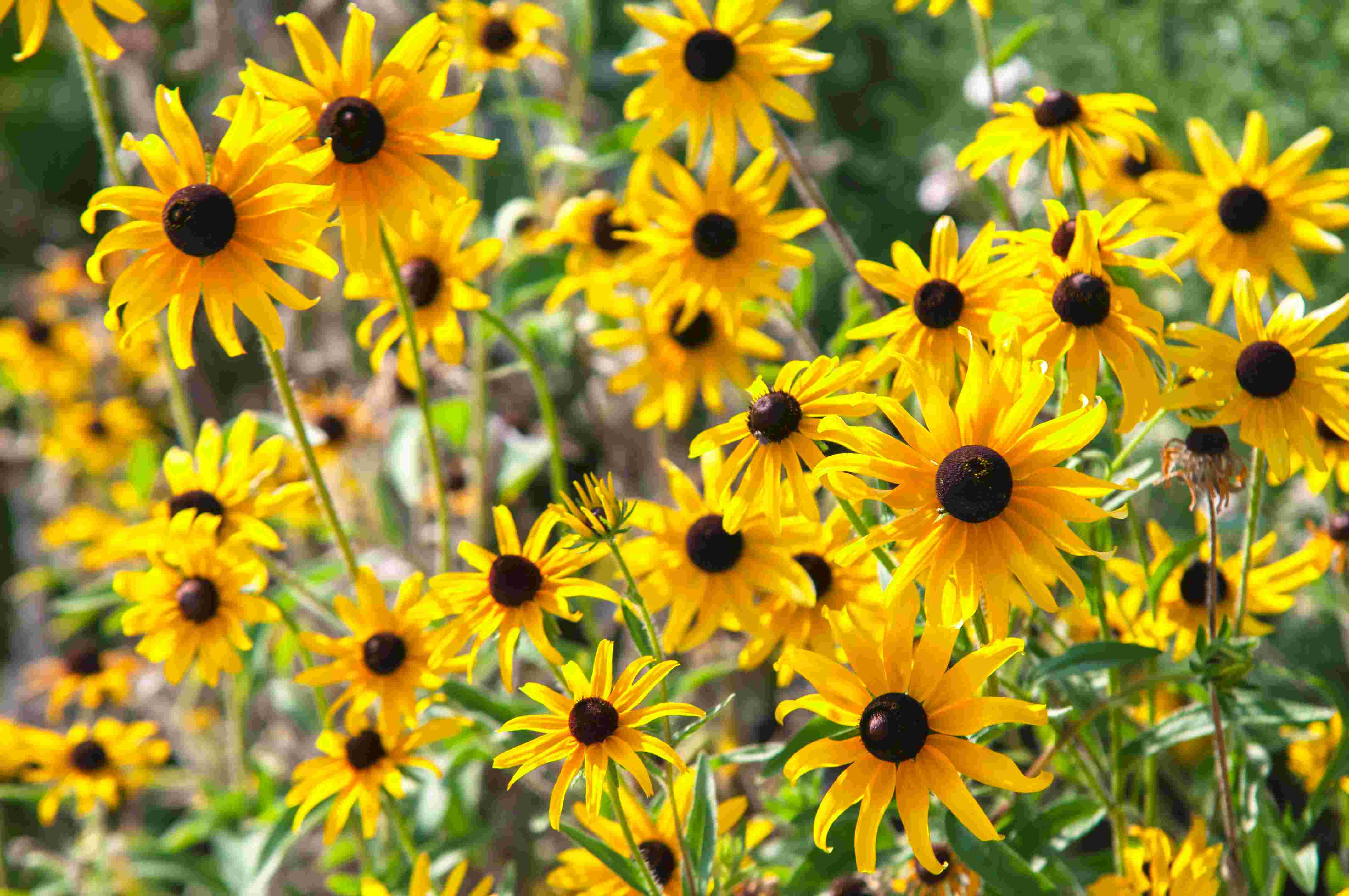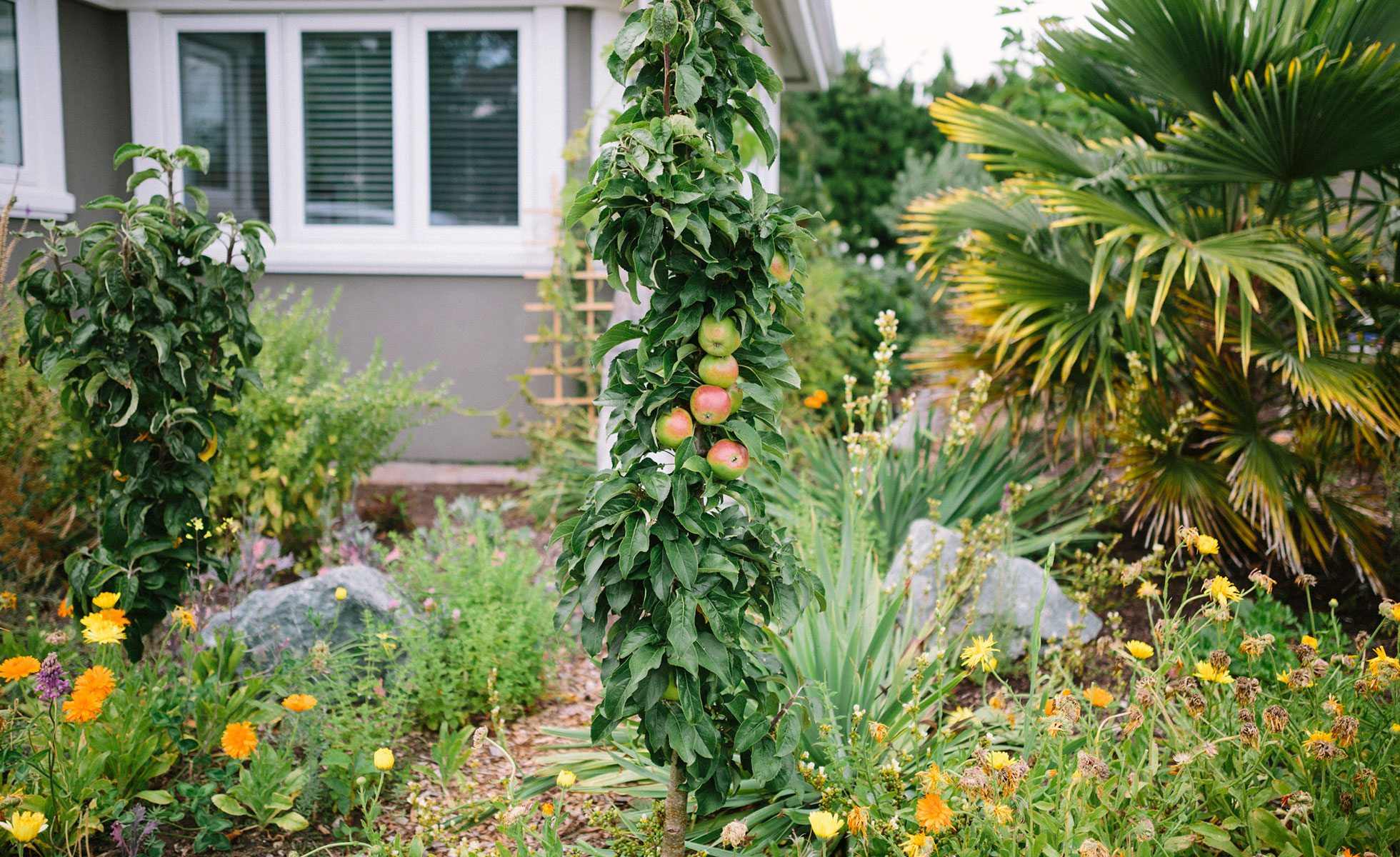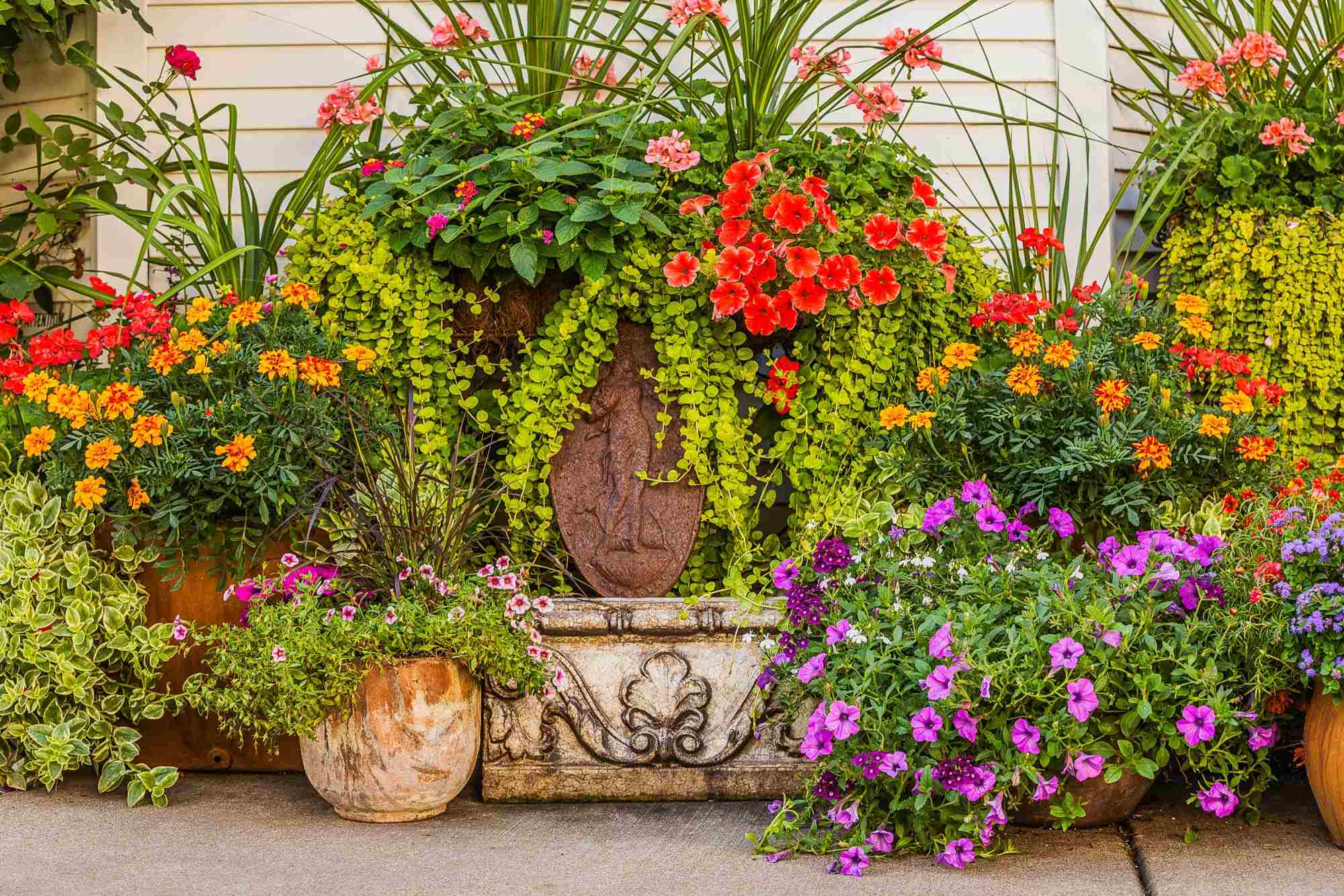Home>Types of Gardening>Ornamental Gardening>Which Plants Come Back Every Year: Annuals Or Perennials?


Ornamental Gardening
Which Plants Come Back Every Year: Annuals Or Perennials?
Modified: February 6, 2024
Discover the key to successful ornamental gardening with our guide. Learn which plants come back every year - annuals or perennials - and create a stunning garden that blooms year after year.
(Many of the links in this article redirect to a specific reviewed product. Your purchase of these products through affiliate links helps to generate commission for Chicagolandgardening.com, at no extra cost. Learn more)
Table of Contents
Introduction
Gardening is a beloved hobby for many, allowing individuals to create beautiful outdoor spaces that bring joy and tranquility. One aspect of gardening that often perplexes beginners is understanding the difference between annual and perennial plants. Knowing the distinction between these two types of plants is crucial as it determines how long they will stay in your garden and the care they require.
Annuals and perennials have different characteristics that make them unique. Annual plants complete their life cycle in one growing season and need to be replanted every year. On the other hand, perennial plants have the ability to come back year after year, consistently adding beauty to your garden.
Understanding the differences between annuals and perennials is essential when planning your garden. By selecting the right mix of plant types, you can ensure a vibrant and ever-changing landscape throughout the seasons. In this article, we will delve deeper into the distinctions between annuals and perennials, explore the benefits of each, and provide guidance on how to identify them.
Definition of Annuals and Perennials
To navigate the world of gardening effectively, it’s important to understand the fundamental differences between annual and perennial plants.
Annuals
Annual plants have a lifespan that spans a single growing season. These plants grow from seeds, bloom, produce seeds, and die within a year. Hence, they need to be replanted every spring or summer to maintain a consistent display of color and foliage in the garden. Popular annual plants include marigolds, petunias, and zinnias. They are valued for their ability to provide bursts of vibrant colors and endless possibilities for creative planting combinations.
Perennials
Perennial plants, on the other hand, have the remarkable ability to come back year after year. These plants establish strong root systems and enter a dormant phase during the winter months, only to reemerge when the conditions are favorable. Unlike annuals, perennials do not need to be replanted annually, making them a long-lasting investment in your garden. Examples of popular perennial plants include roses, hydrangeas, and hostas. Perennials are prized for their ability to provide consistent beauty and reliable performance in the garden.
Understanding the distinction between these two plant types is crucial when planning your garden. While annuals provide stunning displays of color and fill gaps in the garden, perennials create a reliable foundation and add permanence to your landscape. By combining both annuals and perennials, you can create a garden that showcases seasonal charm while maintaining a strong backbone of long-lasting plants.
Differences Between Annuals and Perennials
Annual and perennial plants have distinct characteristics that set them apart and make them suitable for different purposes in your garden. Understanding these differences can help you make informed decisions when choosing which plants to include in your landscape.
Lifecycle: Annual plants complete their lifecycle in one growing season. They germinate, produce flowers, set seed, and die all within a year. Perennial plants, on the other hand, have a lifespan of several years, with many coming back year after year. They go through a dormant period in winter and regrow from the same roots or crown each spring.
Appearance: Annuals are often valued for their showy and vibrant displays. They tend to have a more rapid growth rate, producing an abundance of colorful blooms throughout the growing season. Perennials, while they may not exhibit the same level of instant impact as annuals, offer a more consistent and reliable presence in the garden. They often have a more varied range of forms and textures, and their blooms can last for weeks or months.
Maintenance: Annuals require more frequent maintenance since you need to replant them every year. This includes sowing seeds or purchasing nursery-grown plants, preparing the soil, and ensuring proper watering, fertilizing, and pest control. Perennials, once established, require less maintenance. However, they may need occasional pruning, dividing, or staking to maintain their shape and health.
Cost: Annuals can be more costly in the long run since you need to purchase new plants or seeds each year. Perennials, while they may have a higher upfront cost, ultimately prove to be a budget-friendly option as they can multiply over time through division or self-seeding, reducing the need for frequent purchases.
Flexibility: Annuals offer the advantage of flexibility in terms of experimenting with different colors, textures, and plant combinations each year. They provide an opportunity to refresh the garden and try new design ideas. Perennials, due to their long-term presence in the garden, offer a more stable foundation and can be used to create a cohesive and enduring landscape.
Understanding these differences allows you to make informed choices when selecting plants for your garden. By strategically integrating a mix of annuals and perennials, you can achieve a balance between instant color and long-term beauty, resulting in a stunning and dynamic landscape.
Factors to Consider When Choosing Plants
When it comes to selecting plants for your garden, there are several factors to consider to ensure success and satisfaction. By evaluating these factors, you can choose plants that suit your aesthetic preferences, climate, and gardening skills.
Climate: The first factor to consider is your climate. Determine the hardiness zone you are in to understand the average minimum temperatures and select plants that can thrive in your region. Some plants are better suited to cooler climates, while others are more tolerant of heat and humidity.
Light Requirements: Assess the amount of sunlight your garden receives throughout the day. Some plants thrive in full sun, while others prefer partial or full shade. Choose plants that match the light conditions of your garden to ensure their healthy growth and blooming.
Soil Type: Understanding your soil type is crucial for plant selection. Soil can vary in its composition, drainage, and pH levels. Some plants prefer well-draining sandy soil, while others thrive in heavy clay soil. Conduct a soil test to determine its characteristics and choose plants that are suited to those conditions.
Maintenance Level: Consider your gardening abilities and the amount of time you can dedicate to plant care. Some plants require regular pruning, deadheading, or specific fertilization schedules. Choose plants that align with your desired maintenance level to ensure a thriving and manageable garden.
Water Requirements: Assess the natural water availability in your area and choose plants that are drought-tolerant or adapted to wet conditions accordingly. This will help reduce water usage and ensure the plants can withstand the local climate.
Aesthetic Appeal: Consider your personal preferences for color, flower shape, and plant form. Determine the overall style you want to achieve in your garden, whether it’s a cottage garden filled with delicate blooms or a modern garden with clean lines and architectural plants. Select plants that align with your aesthetic vision.
Wildlife Attraction: If you are interested in creating a garden that attracts pollinators, birds, or butterflies, choose plants that provide food, nesting materials, or shelter for these creatures. Native plants are often excellent choices for wildlife-friendly gardens.
By considering these factors, you can make informed decisions when choosing plants for your garden. Careful selection will ensure that your garden thrives, brings you joy, and complements the natural conditions of your specific location.
Benefits of Annuals
Annual plants offer a range of benefits that make them a popular choice for many gardeners. Whether you are looking to add vibrant colors to your flower beds or fill empty spaces in your garden, annuals can provide the desired impact. Here are some of the key benefits of incorporating annuals into your garden:
1. Seasonal Color: Annuals are known for their ability to produce an abundance of colorful flowers throughout the growing season. Their vibrant blooms can create a striking visual impact and add an element of joy and beauty to your garden.
2. Fast-Growing: Annuals have a rapid growth rate, allowing you to enjoy their beauty relatively quickly. Their quick development and flowering make them a great choice for filling in bare spots or creating an instant burst of color in your landscape.
3. Versatility: With a wide range of annual plants available, you have endless options to choose from when it comes to color, size, and shape. This versatility enables you to experiment with different planting combinations and create unique designs in your garden.
4. Low Commitment: Since annuals complete their lifecycle in one season, they offer flexibility and the opportunity to try different arrangements each year. If you decide to change the overall look and feel of your garden in the following year, simply select different annuals for an entirely new display.
5. Container Gardening: Annuals are well-suited for container gardening, allowing you to create beautiful planters and hanging baskets. Their ability to adapt to confined spaces makes them an excellent choice for adding color to balconies, patios, and other small areas.
6. Continuous Blooming: Annuals tend to bloom throughout the entire growing season, providing a consistent display of color. With careful selection, you can choose annuals that bloom in succession, ensuring a continuous show of flowers from spring to fall.
7. Easier Maintenance: Compared to perennials, annuals generally require less maintenance. Since they are in your garden for only one season, there is no need for pruning, dividing, or long-term care. Regular deadheading and occasional feeding are usually sufficient to keep them looking their best.
By incorporating annual plants in your garden, you can add bursts of color, experiment with different designs, and enjoy the flexibility of changing your garden’s look each year. These benefits make annuals a popular choice among gardeners looking for instant impact and variety in their landscapes.
Benefits of Perennials
Perennial plants offer a host of benefits that make them an essential part of any garden. From their long-lasting beauty to their lower maintenance requirements, perennials provide a strong foundation and bring numerous advantages to your outdoor space. Here are some of the key benefits of incorporating perennials into your garden:
1. Longevity: Perennials are known for their ability to come back year after year. Once established, they become a permanent fixture in your garden, providing consistent beauty and stability. This longevity allows you to create a lasting and reliable landscape.
2. Cost-Effective: While the initial investment for perennials may be higher than annuals, they prove to be cost-effective in the long run. Because they persist for multiple seasons, you don’t have to continuously purchase new plants or seeds, saving you money over time.
3. Low Maintenance: Once established, perennials generally require less maintenance compared to annuals. They have well-developed root systems that make them more resilient and better equipped to tolerate environmental stresses. While some maintenance may be needed, such as occasional pruning or dividing, overall care is typically less intensive.
4. Naturalization and Expansion: Many perennial plants have the ability to naturalize and expand over time. They often produce additional offshoots, or in some cases, self-seed, creating more plants for your garden. This naturalization process allows your perennial garden to grow and fill in over the years.
5. Variety: Perennials offer a wide range of variety in terms of colors, textures, and forms. Whether you prefer bold and dramatic flowers or delicate and airy blooms, there is a perennial plant to suit every taste and preference. This variety allows you to create diverse and visually interesting displays in your garden.
6. Strong Root Systems: Perennials develop deep and extensive root systems, which not only help them survive from year to year but also improve the soil structure. The roots can help with nutrient uptake, water retention, and even soil erosion control, promoting a healthier and more resilient garden ecosystem.
7. Environmental Benefits: Perennials are often favored for their environmental benefits. Their long lifespans mean less disruption to the soil, reducing the need for excessive tilling or soil disturbance. Additionally, their deep root systems can help with water filtration and conservation, reducing runoff and erosion.
By incorporating perennials into your garden, you can enjoy their long-lasting presence, lower maintenance requirements, and environmental benefits. Their ability to create a stable and visually appealing landscape makes them a must-have for any gardener seeking a beautiful and enduring outdoor space.
How to Identify Annual and Perennial Plants
Being able to identify whether a plant is an annual or perennial can be useful when planning and maintaining your garden. Below are some key characteristics and methods to help you distinguish between the two:
1. Lifespan: The lifespan of a plant is a clear indicator. Annual plants complete their life cycle in one growing season, while perennials return year after year. Observe the plant’s growth pattern over time to determine if it regrows or dies off after flowering.
2. Flowering Behavior: Annuals typically produce abundant and showy flowers during their single season. They put much of their energy into blooming and seed production. Perennials, on the other hand, may not bloom in their first year or have more restrained flowering. They often focus on establishing a strong root system before prioritizing blooms.
3. Foliage Persistence: Pay attention to the foliage of the plant. Annuals tend to have delicate or thin foliage that may not persist for long periods. Perennials generally have more robust foliage that can last throughout the growing season and even into the dormant phase.
4. Growth Habit: Consider the growth habit of the plant. Annuals often have a bushy or compact growth habit that is well-suited for container gardening or filling in spaces. Perennials can have varying growth habits, such as upright, spreading, or clumping, depending on the species.
5. Seed Production: Observe the seed production of the plant. Annuals often produce numerous seeds to ensure future generations. Perennials may also produce seeds, but they are more likely to rely on underground stems, rhizomes, or bulbs for reproduction and regeneration.
6. Horticultural Classification: Consult horticultural references or online resources to identify specific plants. Botanical or gardening websites, plant identification apps, or reputable gardening books can provide detailed information about individual plant species and their classification as annuals or perennials.
7. Growing Patterns and Regional Adaptation: Observe how the plant is growing in your specific region. Some plants may behave as annuals in colder climates but as perennials in warmer regions. Understanding the regional adaptation of a plant can help determine its lifespan in your garden.
By observing these characteristics and utilizing external resources, you can develop the skills to identify annual and perennial plants in your garden. Having this knowledge will allow you to make informed decisions about plant selection, care, and garden planning.
Popular Annual Plants
Annual plants offer a wide range of options to add vibrant colors and textures to your garden each year. With their show-stopping blooms and ability to fill empty spaces, they are a favorite choice among gardeners. Here are some popular annual plants that you can consider incorporating into your garden:
1. Petunias: Petunias are renowned for their profusion of colorful trumpet-shaped flowers. They come in a variety of hues, including vibrant pinks, purples, and whites, and they can trail or mound, making them versatile for containers, hanging baskets, or garden beds.
2. Marigolds: Marigolds are cherished for their bright golden or orange flowers. They offer a classic touch to any garden and are known for their pest-repellent properties. They are easy to grow and add a cheery presence to borders, beds, or as companion plants.
3. Zinnias: Zinnias come in a wide array of bold colors and are prized for their ability to attract butterflies. These heat-tolerant plants add a pop of color to borders and cut flower arrangements. They are available in different heights, from dwarf varieties to tall cut-flower types.
4. Snapdragons: Snapdragons are beloved for their distinctive spikes of vibrant flowers that resemble dragon mouths. Available in a range of colors, including pastels and bold hues, they provide vertical interest to beds and borders and make charming additions to cut flower arrangements.
5. Geraniums: Geraniums are popular for their long-lasting blooms and ability to thrive in various conditions. They come in a variety of colors, including red, pink, and white, and are commonly found in container gardens, window boxes, or as bedding plants.
6. Cosmos: Cosmos are valued for their delicate, daisy-like flowers that attract bees and butterflies. They come in shades of pink, white, and red and have feathery foliage, adding a soft and romantic touch to any garden. They are excellent for filling in open spaces and creating a cottage garden vibe.
7. Verbena: Verbena is appreciated for its long-lasting clusters of small, brightly colored flowers. It blooms from spring to fall and is perfect for attracting pollinators to your garden. Verbena can be used as a ground cover, in containers, or as a trailing plant for hanging baskets.
These are just a few examples of the diverse range of annual plants available for your garden. Whether you desire a riot of color, a cottage garden feel, or a formal arrangement, annuals can meet your design preferences and bring joy to your outdoor space year after year.
Popular Perennial Plants
Perennial plants provide lasting beauty and impact to your garden, coming back year after year with minimal effort. These long-lasting plants are a popular choice among gardeners due to their reliability and variety. Here are some popular perennial plants that you can consider adding to your garden:
1. Roses: Roses are timeless favorites known for their exquisite blooms and captivating fragrance. With a wide range of colors and types to choose from, such as hybrid teas, floribundas, or climbers, roses add a touch of elegance and romance to any garden.
2. Hostas: Hostas are beloved for their lush foliage and variety of shapes, sizes, and colors. They thrive in shady areas and provide texture and visual interest to your garden beds. From tiny miniatures to massive specimens, there is a hosta to suit every garden style.
3. Daylilies: Daylilies are versatile perennials that offer a profusion of colorful blooms for several weeks. They come in a wide range of colors and sizes and are known for their ability to tolerate different soil and light conditions. Daylilies make beautiful additions to borders, mass plantings, or as focal points in the garden.
4. Shasta Daisies: Shasta daisies are cherished for their cheerful white blooms with yellow centers. These classic and easy-to-grow perennials bloom throughout the summer and add a charming and timeless touch to borders or cutting gardens. They also attract pollinators and beneficial insects to your garden.
5. Peonies: Peonies are cherished for their large, fragrant flowers and their long lifespan. These showstoppers come in a range of colors, including shades of pink, white, and red. Peonies thrive in cooler climates and add a touch of elegance and beauty to any garden.
6. Lavender: Lavender is valued for its fragrant foliage and beautiful purple flowers. This perennial herb is known for its calming and soothing properties, making it a favorite for sensory gardens. Lavender thrives in sunny and well-drained locations and can be used in borders, containers, or as a hedge.
7. Iris: Irises are admired for their stunning and intricate flowers, available in a wide range of colors and patterns. With their sword-like foliage and bold blooms, they create a striking visual statement in the garden. Irises are ideal for borders, water gardens, or as focal points in your landscape.
These perennial plants are just a glimpse of the vast array of options available. Whether you prefer bold and dramatic blooms or more understated foliage, perennials offer long-lasting beauty, year after year, making them an excellent investment for any garden.
Conclusion
Understanding the differences between annual and perennial plants is essential for creating a successful and visually appealing garden. Both types of plants have their unique characteristics and benefits, and incorporating a mix of annuals and perennials can provide a dynamic and ever-changing landscape.
Annuals offer the advantage of instant color and flexibility, allowing you to experiment with different combinations and designs each year. They provide vibrant blooms and fill in gaps in your garden, creating eye-catching displays. Annuals are a great choice for those who enjoy the excitement of trying new plants and designs annually.
Perennials, on the other hand, offer the benefits of longevity, lower maintenance requirements, and the ability to establish a strong presence in your garden. With their ability to return year after year, perennials create a stable foundation and bring enduring beauty to your outdoor space. They offer a wide range of colors, forms, and textures, allowing you to create a personalized and visually stunning garden.
When choosing plants, consider factors such as climate, light requirements, soil type, and maintenance level to ensure that the plants you select will thrive in your specific conditions. By carefully selecting a mix of annuals and perennials, you can enjoy the best of both plant types and create a garden that is visually captivating, sustainable, and a source of joy for years to come.
Whether you prefer the ever-changing spectacle of annuals or the enduring charm of perennials, the world of gardening offers a wealth of options to suit every taste and preference. Embrace the beauty and versatility of plant life, and let your garden be a testament to your creativity and love for nature.



